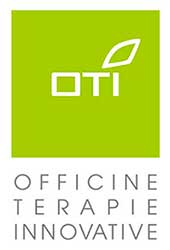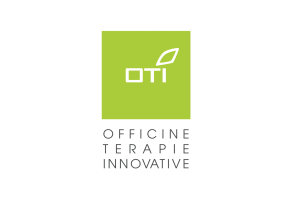Homeopathy, or Systems Modulation Medicine, is a therapeutic method that is based on the analogical principle of similitude and on the law of hormesis.
Hormesis can be considered an adaptive function characterized by a dose-dependent biphasic response (Calabrese and Baldwin, 2002).
Very briefly, the hormetic law defines that low doses of a substance stimulate, high doses of the same substance inhibit (low and high doses mean low dynamic induction and high dynamic induction)(1)Dynamic induction: process by which at each dilution step a kinetic force is imparted to the solution through devices called dynamizers. Since the kinetic energy administered proportional to the number of dilutions, a greater kinetic energy will be required to prepare a 30 CH compared to a 4 CH..
In recent times the most accredited researcher and with more publications in this regard is Dr. Edward J. Calabrese, a professor of toxicology at the University of Massachusetts, who has been studying the phenomenon for almost twenty years, and has demonstrated its validity for about 5000 substances, which have precisely this ambivalent behavior. Numerous substances of mineral, vegetable and animal derivation have been studied in Homeopathy, which possess these biphasic characteristics, substances which have been codified in medical matter and applied in clinical protocols.
Read More
In addition, the homeopathic method also involves the process of dynamization or dynamic activation which consists in subjecting the substance to a precise and sequential series of succussions, agitations or shocks, pharmacologically standardized. This procedure is fundamental to obtain an effective and complete drug. In fact, this has been seen in the case of interleukins: recent studies have observed that the only dilution of interleukin was not sufficient to activate its specific therapeutic role which became effective only after the dynamization process.
The fundamental principle on which Homeopathy is based is founded on the law of similitude: the similar one cures the similar one, that is to say that a substance that during the experimentation on healthy people causes a series of symptoms, can remove them when they present themselves in a sick person , as long as the substance is evaluated according to the hormetic law and processed according to the dynamic induction. The experiments carried out over decades have codified the pathogenesis of numerous substances which were then cataloged in the homeopathic medical field. Homeopathy, therefore, uses drugs regularly registered with the AIFA, (Italian Medicines Agency) as required by Legislative Decree 219 which transposes the European directive 2001/83 / EC, drugs that are prescribed on the basis of the hormetic law and of the pharmaceutical technique dilution associated with the dynamic activation process. The therapeutic protocols are set up on the basis of the aforementioned conditions and in the light of a 200-year experience that has gradually changed and adapted to the most recent discoveries in the medical, chemical and physical fields.
Read More
These protocols are constantly evolving due to the scientific upgrade. It can still be added that homeopathic medicines, due to their intrinsic structure, have the ability to down regulation or up regulation towards many biological elements of the body, with particular focusing on the elements that make up the PNEI axis (Psico- NeuroEndocrino-Immunologico), making use in recent times also of substances of biological and immunological derivation (elements of the Krebs cycle, Cytokines, growth factors, neurotransmitters etc.) with surprising results considering the dose-dependence mechanism. Homeopathy is a highly actual therapeutic method that is coherent with an evolutionary and green vision of Medicine, because it mainly uses low-dose active ingredients of plant and mineral origin and because it is part of the increasingly widespread concept of Slow Medicine: " less is better than more ”, a concept that is present in all environmental projects aimed at the survival of the planet and the human system.
More recently codified, homotoxicology has taken the pharmacological method, based on hormesis and dynamic activation from homeopathy, however, it differed in the diagnostic methodological approach.
Homotoxicology considers the presence of homotoxins towards which the body implements defensive phases which are divided into:
Read More
1. Excretion phase: characterized by physiological excretions through the tissues of the three embryonic sheets and the excretors.
2. Reaction phase: this phase is characterized by pathologically intensified reactions: fever, pain, inflammation.
3. Deposit phase: in this phase there are non-malignant deposits, which can give rise to chronic disturbances
4. Impregnation phase: it is a silent phase, during which the homotoxins penetrate the cells; cell structures and enzymes are destroyed, the functions of the cell membrane can be altered. This phase can remain latent for a long time, however producing a “locus minoris resistentiae”.
5. Degeneration phase: in this phase homotoxins destroy intracellular structures. Degeneration products begin to accumulate. In this phase the functional disorder becomes organic.
6. Neoplasm phase: neoplasms are produced. For Reckeweg the neoplasm phase represents the organism’s attempt to keep itself alive as long as possible, despite the repeated injury events of all kinds. The toxins that invade the body are condensed in the carcinoma.
The homotoxicological treatment therefore aims to remove, as much as possible, the toxins and to go in the opposite direction through the phases described above, a process that is called re-gressive vicariation.
Therefore the disease, in the homotoxicological concept, must be understood as the defensive biological expression that the body puts in place to eliminate the various toxins.
Endogenous homotoxins are the toxic waste of the intermediate metabolism while the exogenous homotoxins are the toxic waste of bacteria, viruses, pesticides, some food additives, some preservatives.
Homotoxicology uses pharmaceutical products, mainly homotoxicological compound medicines, which can be in the form of drops, vials, capsules and ointments for topical use.
This area is reserved for doctors, pharmacists, veterinarians and biologists registered in the Register. Log in to consult our catalog.



